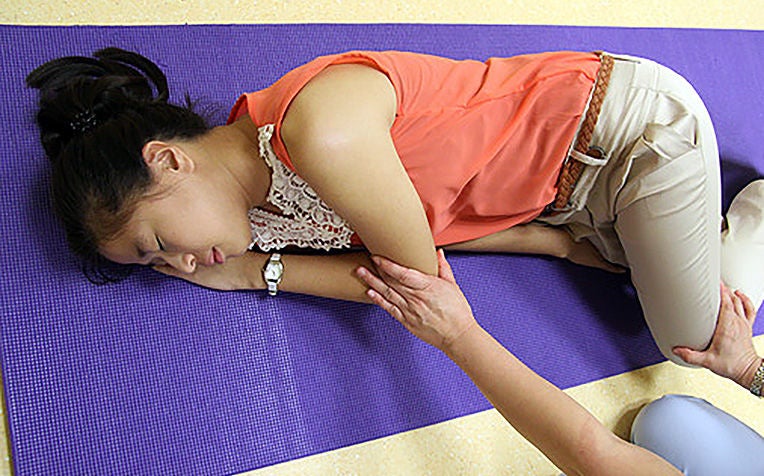
During a seizure or epilepsy attack , remain calm, lay the child flat on the ground, position him or her on the side, and ensure the child is away from danger.
What is a seizure/epilepsy action plan?
A Seizure/Epilepsy Action Plan helps guide parents and caregivers to provide safe and effective care for children with epilepsy.

During a seizure/epilepsy attack: What to do
1. Position your child in the recovery position
 |
|
 |
|
 |
|
 |
|
2. Prepare the Rectal Diazepam
 | Rectal Diazepam
|
 | If your child is:
|
 |
|
 |
|
3. How to administer Rectal Diazepam
 |
|
 |
|
 |
|
 |
|
During a seizure: Do’s and don’ts
![]() Do’s
Do’s
Stay calm. Don’t panic!
Ensure the child is away from danger.
Place the child in recovery position (see above).
Note the starting time of seizure.
Observe the child’s seizure pattern and stay with the child until he/she regains consciousness.
Follow the Epilepsy Action Plan (Green, Yellow, Red zone as appropriate).
![]() Don’ts
Don’ts
Do not attempt to put objects such as a spoon or your fingers into your child’s mouth. Biting the tongue is not dangerous to your child, but inserting objects may harm his/her mouth and teeth.
Do not shake or tap the child vigorously.
Do not restrain the child’s movements.
Do not feed the child fluid/medication (doing so may cause choking).
After a seizure: What to do
Record the following in the seizure diary:
Clear description of seizure pattern.
Date and duration of seizure.
Possible trigger factors (e.g. bright flickering lights, lack of sleep etc.)
Possible warning signs (aura) just before seizure (e.g. feeling fearful, nausea, headache, sensing unusual smell etc.)
If you child is on seizure medication:
Never stop or reduce seizure medication(s) even if your child is better or seizure-free. Only neurologists can adjust or discontinue medication.
If he/she misses a dose, take the missed dose immediately. But if it is less than 3 to 4 hours to the next dose, skip the missed dose and take the next dose at the usual time. Never double dose! (Record such events in the seizure diary)
If he/she vomits within 5 to 10mins after taking the medication, repeat the dose. (Record such events in the seizure diary)
When seeing another doctor or the dentist, always inform the doctor/dentist that your child is taking seizure medication regularly
Avoid letting your child:
Consume grapefruit juice (it increases the level of seizure medications and causes toxicity)
Take antibiotics such as Erythromycin and Clarithromycin with Carbamazepine as it can cause drug interactions and toxicity (e.g. drowsiness)
Consume ginkgo nut and evening primrose oil (may trigger seizure)
- Always check with your neurologist or pharmacist before giving any other medicines to your child such as traditional medicines, supplements or herbal products.
When to consult your neurologist
Change in seizure pattern in your child
Increase in seizure frequency in your child
If your child experiences drug allergies or severe side effects from the seizure medication(s)
Ref: K21

















 Get it on Google Play
Get it on Google Play